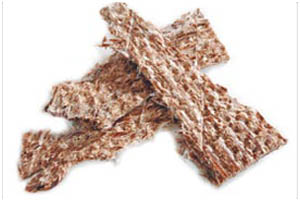Before the arrival of the Spanish in our country, the indigenous people based their diet on the availability of food.
This way, depending on whether they were hunters, fishermen or farmers, they received their nourishment from fruits, herbs, guanaco and vicuña meat and the abundant resources provided by the sea.
Species like corn, potato and quinoa were grown in the land.
However, these indigenous traditions would suffer a violent change after the arrival of the Spanish.
Just as it happened with other parts of private life, like religion, the encounter of conquerors and indigenous people resulted in new customs that mixed both traditions due to crossbreeding (mestizaje).
One may contend that Chilean cuisine as we know it today, is born from the encounter of indigenous tradition with the customs brought by the Spanish. The mixing of unknown products and new recipes resulted in dishes that are consumed by our population to this day and which are considered typically Chilean.
Although Diego de Almagro was one of the first Spaniards to travel our country, it was Pedro de Valdivia and his cohorts who introduced new foods, such as wheat, beef, poultry and pork, and they intensified the production of other foods, like corn and potatoes. In the mid XVI century, a considerable mass of cattle was incorporated to the country, setting the baseline for our diet.
Meats, legumes and stews were the conqueror’s preferred plates, as well as locro, humitas and chuchoca. When it came to sea products, cochayuyo (Durvillaea antarctica), luche (Porphyra) and ulte were some of the species assimilated during the first years of the conquest, as well as white sea bass, conger and a few mollusks like the sea urchin.
During Colonial times, culinary customs began to take root in the population. Also, the pastries produced in convents began to be widely recognized, especially white manjar, sustancias (made from cow bones), quince and jellies. The expression «mano de monja» («a nun’s hand» which means someone cooks very well), comes from here, and it refers to the delights prepared and which is nowadays used to qualify people that have a knack for cooking.
Later on, at the end of the XIX century, traditional cooking would receive an important influence from Europe. French customs burst on the traditional cuisine scene, marking a new phase. Omelets, chupes and some stews became part of the national diet; the menus at different restaurants even detailed their dishes in French, most of the time with many spelling mistakes, but attempting to copy the refinement of the European nation.








 Muere Evita
Muere Evita